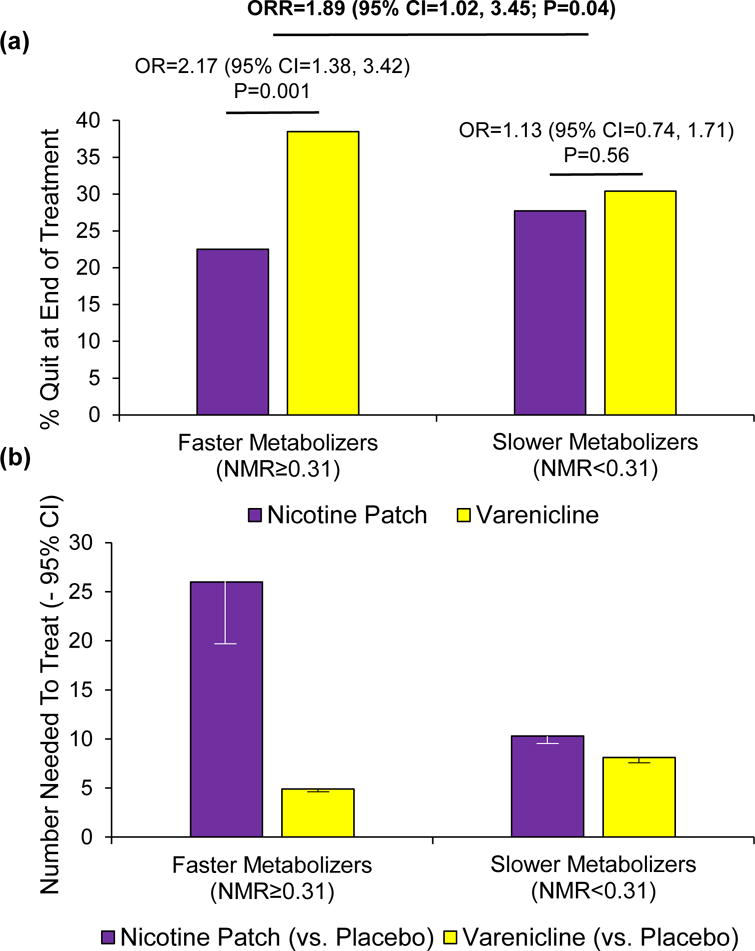Figure 2.

Key Figure. The nicotine metabolite ratio influences smoking cessation outcomes on varenicline and the nicotine patch.
In smokers prospectively randomized to varenicline, nicotine patch, or placebo based on the nicotine metabolite ratio or NMR, end-of-treatment quit rates and odds ratios (OR) with 95% confidence intervals (CI) comparing the efficacy of varenicline versus the nicotine patch as a function of NMR group (faster vs. slower nicotine metabolizers) are shown in (a). There was a significant NMR-by-treatment interaction on end-of-treatment quit rates: ratio of odds ratios (ORR) = 1.89 (95% CI = 1.02, 3.45; P=0.04) (a). In a longitudinal model including end-of-treatment as well as 6-month and 12-month quit rates, the NMR-by-treatment interaction was also significant: ORR = 1.96 (95% CI = 1.11, 3.46; P=0.02). Number needed to treat analyses comparing the effectiveness of varenicline versus placebo, and nicotine patch versus placebo, as a function of NMR group (faster vs. slower nicotine metabolizers) are shown in (b). For example, 26 faster metabolizers would need to be treated with the nicotine patch to have one smoker quit. The full results from this clinical trial (NCT01314001) are found in a publication by Lerman et al., 2015 [22]. Abbreviation: CI, confidence interval
